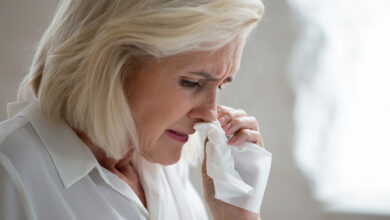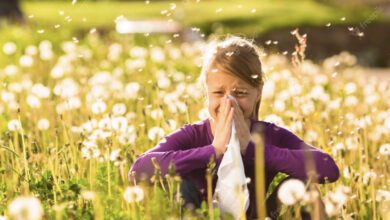SLEEP APNEA AND CPAP: A “Dickens” of a Disease!

Have you heard that guy on the radio who advertises the Zyppah device for what he calls “snahrring.” He says “snahrrers” are rude, selfish, inconsiderate people! Oh, Really? Like they “snahr” on purpose just to annoy everyone. Well, it would be rude and inconsiderate if they denied they had the problem and refused to do anything about it. I’m sure you’ve heard of people whose spouse recorded their snoring just so they could prove it to them and get them to do something about it.
Today, sleep disorders are so common that “Sleep Medicine” has become a subspecialty of internal medicine. Pulmonologists, lung specialists, comprise the largest number of physicians in this field because of the breathing problems associated with sleep disorders, but since the central nervous system is affected, neurologists (doctors who specialize in disorders of the nervous system) diagnose and treat sleep disorders as well. Diagnostic “sleep centers” have sprung up all over the country. Here patients can go, with or without a referral, to have their sleep issues evaluated and treated.
Eighty sleep disorders, many of them obscure and rare, have been identified. But these eight disorders affect the majority of patients. They are as follows:
InsomniaObstructive Sleep Apnea (OSA)
Restless Leg Syndrome (RLS)
REM Sleep Disorder
Narcolepsy
Sleepwalking
Night Terrors
Bruxism (grinding, clenching of one’s teeth during sleep)
Jet lag is considered a sleep disorder, as well, but since it is caused by external circumstances, and not by some anatomical or neurologic abnormality, it is not pertinent to this discussion.
For our purposes, I have chosen to limit this post to snoring and obstructive sleep apnea.
And that’s a big subject itself. My first awareness of OSA was in 1973 during my Family Medicine residency. The University of Colorado School of Medicine, where I did my residency, had a world-renown Department of Pulmonary Medicine. Two pulmonary fellows were doing extensive research on what was then-called Pickwickian Syndrome. In Charles Dickens’ “Pickwick Papers,” one of the characters was a morbidly obese gentleman who fell asleep all the time and snored badly. The theory was that his short, fat neck and the excess fat around his chest and abdomen, impeded his ability to breathe, especially when asleep, and he was under-breathing. This under-breathing resulted in less oxygen and more carbon dioxide getting to his brain—hypoxia and hypercapnia. He was hypoxic (low blood oxygen). It was thought that hypoxia, and the build up of carbon dioxide in the bloodstream, caused him to fall asleep all the time.
Well, they had the right idea, but only partially the right cause. Further study revealed that patients like this were having upper airway obstruction which caused the lowered blood oxygen level. When they were supine (laying on their back), the soft palate and tongue were relaxing, collapsing, and blocking the airway. Air (21% oxygen) was prevented from getting to the lungs and oxygen absorption and carbon dioxide release were impeded. Low oxygen (O2) and high carbon dioxide (CO2) levels awaken the brain from sleep in a reflexive effort to make the patient breathe again in an attempt to restore the proper O2 and CO2 concentrations. The patient awakens to interrupt the blockage and breathe normally, again. When this happens several times an hour, as it usually does, the brain never reaches the deeper phases of restful sleep. The patient’s sleep becomes fragmented and unrefreshing. They snore, waken frequently during the night, choke and gag during sleep, wake with a headache and feeling tired, are tired during the day, and are constantly drowsy. The brain never gets the rest it needs so patients have mood swings, trouble focusing, remembering, and paying attention.
The most worrisome consequences of OSA are cardiovascular problems. The respiratory effort required to breathe during sleep puts a strain on the heart and can lead to arrhythmias (especially atrial fibrillation), high blood pressure, heart attack, and stroke. It’s a bad actor!
Snoring, however, is the symptom of OSA reported most often, usually by the sleep partner. It wakens them and fragments their sleep as well. In OSA patients, the soft palate and tongue relax and block the airway. Breathing, then, is difficult because these tissues collapse making air passage difficult and very noisy. Partners also will often observe the patient to stop breathing and/or choke. Their observations of the partner’s sleep behavior are important in determining the proper means to a diagnosis. The sleep study has become the gold standard for diagnosing whatever sleep disorder is suspected.
Sleep centers are quite numerous nowadays so I wouldn’t go to just any one. I would check out who owns the center and who it is administering and interpreting the study. A sleep study requires the patient to sleep in a strange place (the center) for one night-at least six hours. You bring what you normally need to sleep-book, pillow, comfy jammies, blindfold, whatever. During the test, you’re “wired for sound” and every imaginable body function is measured. Heart rate, blood pressure, breathing rate, oxygen saturation, brain waves, muscle movements, and a video recording of you sleeping are items that are monitored. When you have a strap around your chest, wires glued to your scalp and extremities, a BP cuff on your arm, and an O2 saturation monitor clipped to your middle finger you wonder how you’ll ever go to sleep. But you do and the monitors record everything that happens. If you’ve had a sleep study you know what I’m talking about.
The results of all these measurements give your doctor all the data necessary to make the correct diagnosis and prescribe appropriate treatment. For OSA, the treatment of choice is Continuous Positive Airway Pressure, CPAP. It’s amazing the number of people you encounter who use CPAP. It’s proper function requires the patient to wear a mask or nasal pillows through which positive air pressure is forced into the throat and upper airway to keep the throat inflated and force it to stay open, during breathing at night. This corrects the main cause of snoring, under-breathing, fragmented sleep, hypoxia, and all the consequences thereof. It works very well for most patients. The amount of positive pressure can be adjusted by your CPAP machine depending on your need.
Snoring can also be caused by nasal problems, smoking, alcohol consumption, an enlarged uvula (the thingie hanging in the back of your throat), and sleeping lying supine. In the early days, before CPAP became sophisticated, removing the uvula surgically was done (called uvulopalatoplasty). It helped the snoring but afterward, patients often sounded like they were talking through their nose all the time. For patients who snored lying on their backs, the best option was a shirt they wore to bed that had a pocket in the middle of the back in which you placed tennis balls or something that forced them to lie on their side. As you might suspect, it had limited affect. Fortunately, extensive research on, and technological advancements of, CPAP have improved its efficacy and usability.
With treatment, snoring resolves or improves, and the consequences of OSA are eliminated. Patients feel refreshed after a night’s rest. They no longer fall asleep at inappropriate times. And generally, they feel much better. So if you’re one of those “obnoxious snahrrers,” it’s time to admit it and do the things necessary to make your and your partner’s quality of life better.
References:
1. mayoclinic.org/diseases-conditions/snoring/symptoms-causes
2. alaskasleep.com/blog/the-5-most-common-sleep-disorders
3. alaskasleep.com/blog/types-of-sleep-disorders
4. fastcompany.com/common-and-terrible-sleep-disorders
5. Proceedings American Thoracic Society, Vol.5, pp 144-153, 2008.




